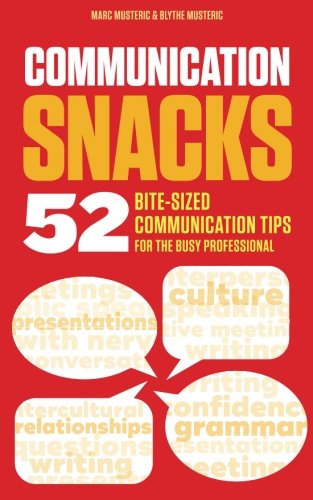Fluent English in 5 Steps
Being fluent in English doesn’t mean speaking fast. You are already fluent in your native language, right? Do you always speak your native language fast? Probably not. Fluency in any language is more about speaking with the correct rhythm and pronunciation and less about speaking fast.
Tip 1: If you want to become a more fluent speaker, ignore grammar mistakes. Focus on speaking without stopping instead.

Being fluent does not mean being perfect. Are you fluent in your native language? Yes. Do you ever make mistakes? Yes, of course you do. Everyone does. If you start to say something, and you realize you have made a mistake, keep talking. You do not have to correct your grammar unless you think it will be confusing.
For example, a native speaker will often say, “There’s five people waiting in the lobby” instead of the correct sentence, “There’re five people waiting in the lobby.” If you correct yourself and say, “There’s five, I mean, there are five...” It will sound less fluent than if you ignore your mistake and keep talking.
To practice this skill, speak for two minutes about any topic, and try to ignore your mistakes. Do not start your sentence all over again if you make a mistake. Keep talking without stopping.
Tip 2: To become a fluent English speaker, you need to connect sounds within and between words.

This effect makes the language sound smooth and flow like a wave. While there are rules for connecting sounds, the best way to learn is to extend the ends of your words and let them connect with the next word naturally.
Make connections inside words: Do not stop your voice in the middle of a word. For example, do not say “co - nect,” instead say, “connect.” Make connections between words: Do not read these three words alone: “middle of a.” Instead, say, “midelova.” This will make you sound more fluent. Delete sounds: Fluent speakers also combine words by deleting letters. In informal situations, it is better to say, “I don’t wanna go” instead of “I do not want to go.”
Click on the links below to get started with connecting:
Connected Speech/Linking Video
Connected Speech/Linking Practice
Deleted Sounds Practice
View all of our connecting and linking pronunciation pages:
Connecting and Linking Resource Page
Accent Diet Connecting Resource Page
Accent Diet Connecting Rules Resource Page
Tip 3: A fluent speaker stresses the important words in a sentence.

If you want to speak in fluent English, you have to stress the correct words in your sentence. Your listener will expect to hear more emphasis (stress) on the key words. If your listener hears stress on the wrong words, at best he will think your speech sounds strange, and at worst, he will not understand your meaning.
For example, do not say, “THERE are problems WITH the site.” (Stressing “there” and “with” is not typical.) Instead, you should say, “There are PROBLEMS with the SITE.” (Stress the words “problems” and “site.”)
Word Stress Video
Word Stress Practice
View all of our word stress pages:
Word Stress Resource Page
Accent Diet Word Stress Resource Page
Tip 4: To sound fluent, your voice should rise and fall when you speak. Most English statements have an “up – down” pattern.

Use intonation to help your listeners distinguish between your questions and statements. Intonation also helps your listeners understand your true feelings—even when you do not say what you mean.
To reach this level of fluency, you need to spend time listening to native speakers in various situations. Listen to people asking questions, negotiating, persuading, describing, and so on. If you listen to a recording, repeat their intonation patterns along with the recording. To practice your own intonation, stand up and speak. Move up onto your toes when you say a keyword and move your voice up as your heels go up. This movement should help you “feel” the intonation.
Intonation Video
Intonation Practice
View all of our intonation pages:
Intonation Resource Page
Accent Diet Intonation Resource Page
Tip 5: Pausing is an important part of English and will help you to sound fluent. Let silence be part of your speech.

Many people wrongly think that pausing is bad for fluency, but it is NOT! Pausing in the correct place will help you sound more fluent. Do not pause between every word, but do pause for about a half a second between phrases and before or after you say something really important. Be careful! Do not pause for more than 1 second. Doing this will not help your fluency. If you pause too long, you will be interrupted.
To practice pausing, squeeze your hand into a fist under the table when you are talking. This will serve as a physical reminder to pause. Also, listen to the radio and TV and pay attention to the pauses that speakers make. You will see that fluent speakers do pause!
Pausing Video
Pausing Practice
View all of our pausing pages:
Accent Diet Pausing Resource Page
I hope you found this page helpful. If you have questions, please leave a comment below, and we will be sure to respond!

 About MyOvient
About MyOvient Contact Us
Contact Us


